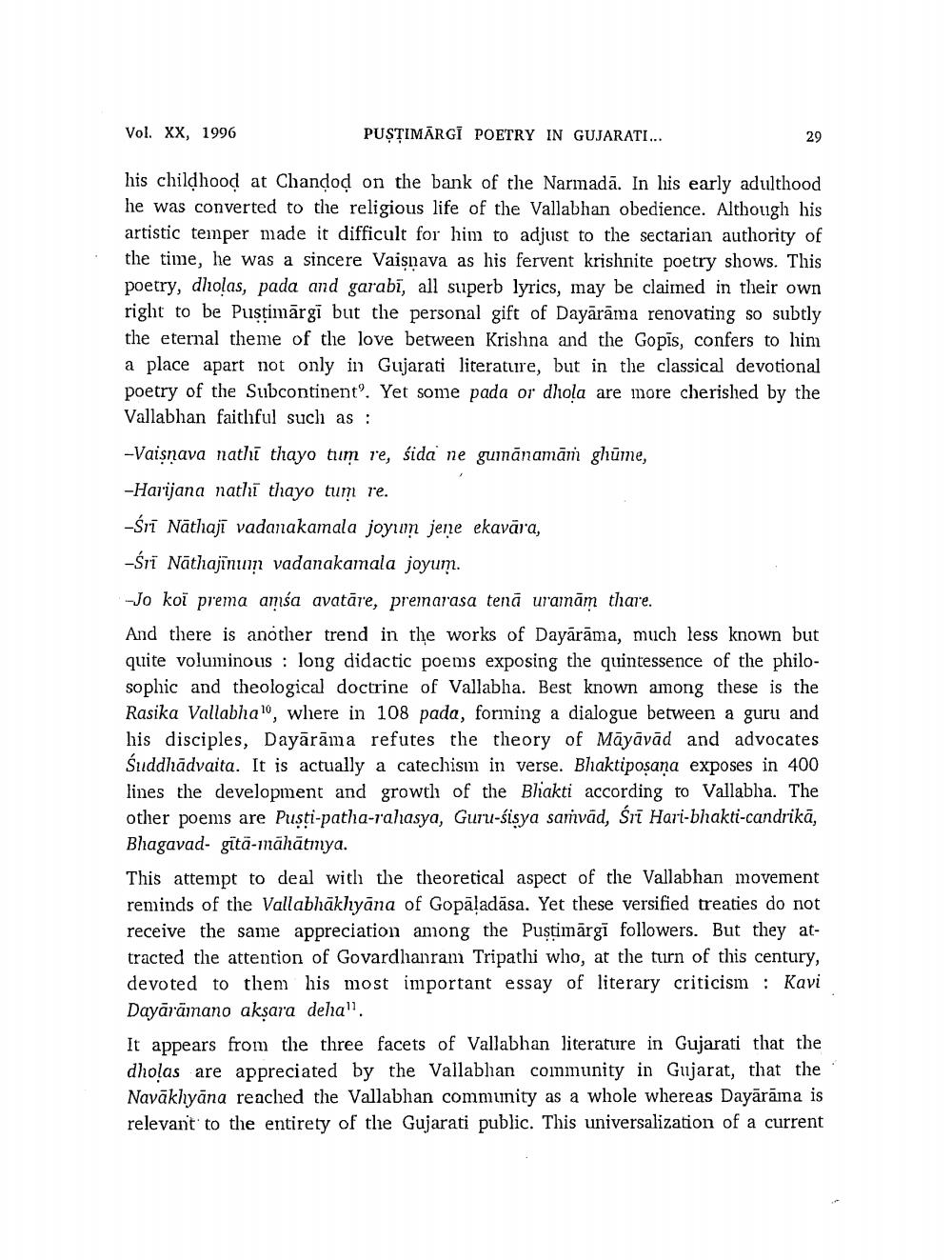________________
Vol. XX, 1996
PUSTIMĀRGI POETRY IN GUJARATI...
29
his childhood at Chandod on the bank of the Narmadā. In his early adulthood he was converted to the religious life of the Vallabhan obedience. Although his artistic temper made it difficult for him to adjust to the sectarian authority of the time, he was a sincere Vaisnava as his fervent krishnite poetry shows. This poetry, dlzolas, pada and garabī, all superb lyrics, may be claimed in their own right to be Pustimārgi but the personal gift of Dayārāma renovating so subtly the eternal theme of the love between Krishna and the Gopīs, confers to him a place apart not only in Gujarati literature, but in the classical devotional poetry of the Subcontinent'. Yet some pada or dhiola are more cherished by the Vallabhan faithful such as: -Vaisnava nathi thayo tum re, śida ne gumānamām ghūme, -Harijana nathi thayo tum re. -Śrī Nāthaji vadanakamala joyun jene ekavara, -Śri Nāthajinun vadanakamala joyum. -Jo koi prema amsa avatāre, premarasa tenā uramām thare. And there is another trend in the works of Dayārāma, much less known but quite voluminous : long didactic poems exposing the quintessence of the philosophic and theological doctrine of Vallabha. Best known among these is the Rasika Vallabha, where in 108 pada, forining a dialogue between a guru and his disciples, Dayārāma refutes the theory of Māyāvād and advocates Suddhādvaita. It is actually a catechism in verse. Bhaktipoşana exposes in 400 lines the development and growth of the Bliakti according to Vallabha. The other poems are Pusti-patha-rahasya, Guru-sisya sarvad, Śri Hari-bhakti-candrikā, Bhagavad- gitā-māhātmya. This attempt to deal with the theoretical aspect of the Vallabhan movement reminds of the Vallabhākhyāna of Gopāladāsa. Yet these versified treaties do not receive the same appreciation among the Pustimārgi followers. But they attracted the attention of Govardhanram Tripathi who, at the turn of this century, devoted to them his most important essay of literary criticism: Kavi Dayārāmano aksara deha". It appears from the three facets of Vallabhan literature in Gujarati that the dholas are appreciated by the Vallabhan coinmunity in Gujarat, that the Navākhyāna reached the Vallabhan community as a whole whereas Dayārāma is relevant to the entirety of the Gujarati public. This universalization of a current




